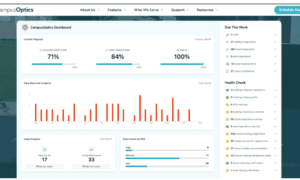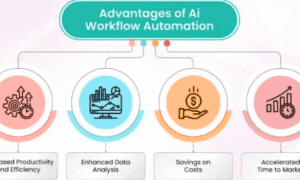Written By Ritesh Lad
Bid management has never been a low-risk activity. The ability to generate a winning proposal has always been seen as an art and a science. One of the questions that should be considered when considering the impact of the changing rules of operation of the process is what happens when the number of tenders, the complexity of specifications, and the speed at which decisions must be made are beyond human ability. The answer is to embrace artificial intelligence (AI) and automation.
Bid teams have long relied on a mix of hard work, experience, intuition, and late nights to produce good proposals. Artificial intelligence is now arriving on the scene. Its purpose is not to replace human intuition but to augment it. AI is analyzing the history of success, spotting compliance issues in real-time, and helping teams to determine the likelihood of bidding for a job in the first place. In a scenario where winning the right bids has the potential to make a huge difference to the future of a company, AI is revolutionizing the way organizations respond to competitive tenders.
With over six years of experience leading digital transformation initiatives across consultancy, IT, and financial services, I have been at the forefront of bid management, orchestrating high-stakes, multi-million-dollar proposals across multiple industries. My career spans strategic roles at Accenture, Hinduja Global Solutions, NSEIT, and Talantage LLC, where I have consistently driven bid success with an industry-leading 96% win rate. I have refined my experience in traversing complicated, high-value proposal development, sales enablement, and compliance-oversight documentation so organizations may fully capitalize on competitive strength within the tendering landscape.
Having managed cross-functional teams in the handling of thousands of RFPs, RFIs, and RFQs, I have gained an intimate appreciation for the issues bid teams encounter from the complexity of regulatory compliance to the pressure of data-driven decision-making. My experience has included utilizing AI-fueled analytics, optimizing pricing strategies, and driving automation-based efficiencies that revolutionize bid management.
In this article, I explore how AI and automation are no longer mere tools of convenience but critical drivers of success, redefining how competitive tenders are assessed, strategized, and won in today’s fast-paced, technology-driven business environment.
The Evolution of Bid Management: From Gut Instinct to Data-Driven Precision
Bid management was previously a solely time-consuming manual process with great dependence on human judgment. Staff would spend hours poring over tender documents, double-checking for compliance requirements, and hand-writing responses at every opportunity. Although rigorous, the process was slow and inconsistent. Errors, often as basic as not seeing a clause hidden in the small print, could cost firms millions of dollars in lost contracts.
Automation was the first wave of change, making document handling easy and adding templates for generating standardized responses. However, that was not sufficient. Bid management involves decision-making. That is when AI came onto the scene. With predictive analytics, AI can now determine bid feasibility, suggest pricing tactics, and even flag competitor patterns. Rather than depending on historical experience, organizations can now make decisions based on data, enhancing their ability to be efficient and increase their win rates.
At NSEIT, where I led business development and proposal strategies, bid management for financial institutions was a laborious manual process. Compliance checks, risk assessments, and competitive alignment took extensive time. AI-driven automation cut the time spent on preparing bids by 40%, thus improving compliance accuracy and enabling experts to spend time on strategic work instead of administrative work. This shift led to a higher success rate and significant error reduction.
Moreover, at Hinduja Global Solutions, I was tasked with responding to more than 1,000 RFPs, RFIs, and RFQs from different sectors. AI-based tool, Loopio, automated the bid review process, lessening the effort required from humans and improving response accuracy. Having the option to create a detailed compliance checklist through AI was a valuable contribution towards streamlining our submission approach.
The Competitive Edge Of AI and Automation That Can No Longer Be Ignored
One of its most powerful uses in bid management is automated compliance verification. AI technology can read bid documents against regulatory templates, flagging discrepancies and risks prior to proposal submission. This enables firms to never lose a vital compliance factor that would lead to disqualification.
Another area where AI is making a difference is proposal writing. Creating a persuasive bid previously required months of feedback from experienced writers and subject matter experts. Now, AI systems learn from previous winning bids and analyze their winning arguments, structuring the content in the same ways. The outcome is that the bids are compliant and aligned to the evaluator’s expectations.
At Accenture, where I led proposal writing for the North America – South market unit, we combined AI-driven compliance screening and competitive intelligence software to optimize our bid tactics. In a profitable Fortune 500 IT services contract bid, Qvidian, a proposal management and RFP automation tool, facilitated real-time screening of regulatory requirements and analysis of past winning bids. It resulted in a 20% boost in contract win rates, demonstrating that AI is not just a tool but a competitive force.
In my recent role at Talantage LLC, I worked closely with leadership to respond to federal RFPs and RFQs. AI-powered bid analytics allowed us to refine win themes and align responses more strategically. The integration of AI-driven pricing models has significantly improved cost-effectiveness in bid proposals.
Smarter Decision-Making Is About When to Bid and When to Walk Away
Not all bids are worth targeting. However, how do you determine which ones to target? Traditionally, this was an instinct-based, experience-driven decision supported by a small amount of data. AI is turning this around with Go/No-Go decision models. These models consider historical success rates, competition levels, and the cost of allocating resources to inform teams on making the right choices. This allows organizations to channel their efforts on bids that they are likely to win.
On top of that, sentiment analysis introduces an additional level of intelligence. Through examining the bid language and format, AI can forecast how an evaluator is likely to react to a proposal. It assists teams in refining their strategy, so proposals are not only technically correct but also compelling.
At Hinduja Global Solutions, where I managed virtual bid teams and led proposal development, AI-driven Go/No-Go analysis decreased unqualified bid submissions by 30%. Rather than pursuing every potential contract, the company concentrated its efforts on high-value opportunities with a higher likelihood of success, boosting overall contract acquisition efficiency.
AI’s Role in Crafting Persuasive Bids
AI can transform bid management, but don’t forget that bids still get read and judged by people. This means that persuasion, storytelling, and emotional resonance count as much as compliance and technical correctness. AI is now being used here as well, mining successful past proposals to extract patterns of persuasive writing.
Yet, there’s still doubt about the use of AI-generated work. Can machines truly create bids that appeal to human assessment? The secret is human-AI collaboration. AI can certainly create drafts, but human intuition is needed to correct the tone, infuse creativity, and make the resulting proposal appeal to the client’s needs.
When crafting a stock exchange modernization proposal at NSEIT, I employed AI-informed insights to enhance storytelling aspects. The final bid excelled not only on technical grounds but also in its narrative appeal, winning a contract in a highly competitive field.
Keeping AI in Check Through Ethics and Transparency
With the increasing involvement of AI in bid management, ethical questions are unavoidable. Can AI subtly introduce biases? How can we make sure AI-based assessments are equitable? Transparency and accountability provide the answer. AI-based recommendations need to be explainable, and businesses have to work on preventing AI from generating excessive competitive advantages.
Governments and regulators are starting to lay down guidelines for AI procurement. Companies that focus on transparency in their AI models will remain compliant and develop credibility with clients and regulators.
To promote equitable competition, AI systems were programmed with full transparency and objective assessments. The outcome was a procurement process that maintained moral standards while enhancing efficiency.
The Future of Bid Management: AI as a Partner, Not a Replacement
The future of AI in bid management is going beyond proposal writing and compliance. AI-driven contract negotiation software is already emerging, which assists businesses in analyzing past pricing records to better fine-tune their negotiation. It will also ensure an uninterrupted flow of data from bid submission to contract signing with integration with CRM and sales platforms.
At Accenture, integrating AI-driven proposal management tools reduced manual effort by 50%, allowing bid teams to focus on high-value client engagement. This hybrid approach—leveraging technology while preserving human expertise—has since been adopted across multiple business units, setting new benchmarks for bid management efficiency.



































